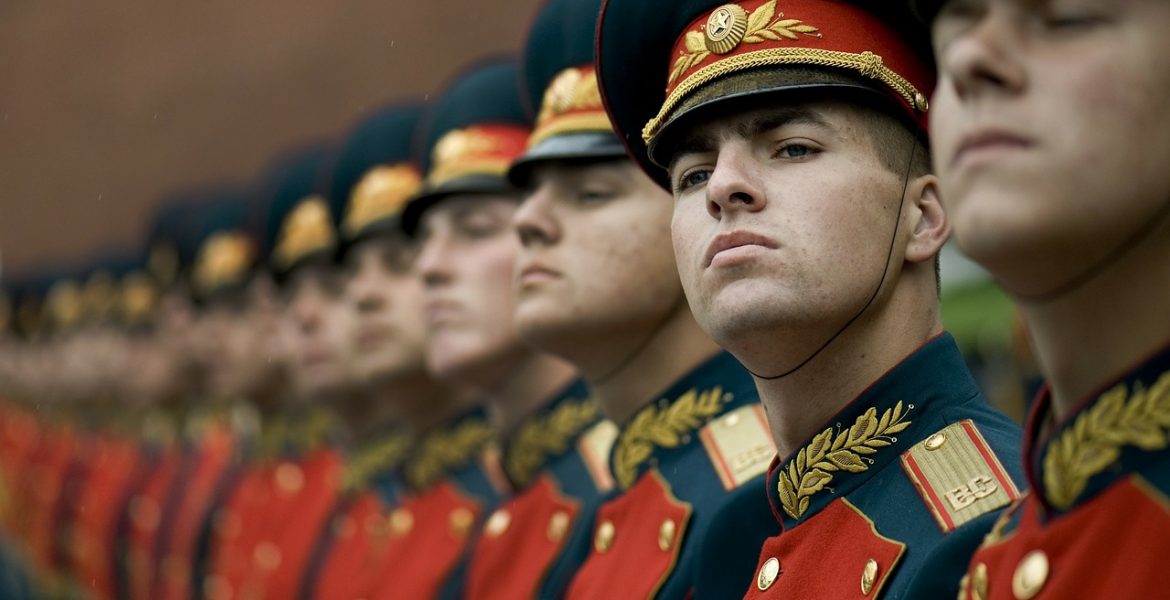The Russian Federation is bringing the levels of tension to new heights. The previous crisis occurred in 2014 with the military invasion of Ukraine and a significant increase in military and hybrid activity by land, air, sea, and in the digital space. Since then, the international community has been systematically shaken by reports of Russian submarines discovered off the coast of Britain, damage to bottom submarine detection systems near Norway, and access to information on the location of the German fleet in the Baltic Sea. Russia has repeatedly violated airspace in Europe, practiced training activities to strike at strategic targets, and conducted joint military exercises intended to identify the exact locations of NATO troops. The Kremlin has also turned cyber espionage into its own industry, supporting Russian production and the modernisation of its military-industrial capabilities.
Russia’s special services, primarily the GRU (Main Intelligence Directorate) and the FSB (The Federal Security Service), have overseen the recent escalation of an artificial crisis on the Belarusian-Polish border, involving the local KGB (Committee for State Security) and other networks in the Republic of Belarus. They created a humanitarian crisis at the border, which also identified weaknesses in Poland’s defence, enabling targeting by any military strike if necessary in the event of widespread aggression. The crossing of armed Belarusian “border guards” into Poland, cutting wires, damaging fences, crossing the border with cars, providing migrants with tear gas canisters were all part of the tactics. In manufacturing this artificial crisis, the following consequences for Moscow emerged: the lack of consensus in the EU, the feeling of isolation in Warsaw in their fight against hybrid aggression; NATO’s failure to respond; distraction of the Europe and the United States from preparing for a new round of aggression in Ukraine; bringing Lukashenko out of the margins (with speaking opportunities on the world media stage).
What happens next will depend on analysis of the results of the first stage. It may include several areas, interconnected and aimed at gaining strategic objectives. Migrants from the police and other law enforcement agencies of the allied states may receive firearms (both from the criminal past, and smuggled from Central Asia). A provocation may be organised by deliberately injuring or even killing young people by transferring their bodies to the Polish side of the border while simultaneously filming fake coverage of the “alleged” brutality of the Polish military. A standard playbook from Russia might be for the DRG (diversion intelligence group) of Russians and Belarusians entering the neighbouring territory and changing into Polish uniforms. To this may be added a demonstration of military power: regular flights of strategic aircraft, violations of the air and sea space of NATO member countries. Such a scenario could occur in the event of increased sanctions against Russia and Belarus, military warnings from NATO, reverse military manoeuvres, and steps towards assistance to Ukraine.
A third and final stage will hopefully never happen, but might be characterised by a confrontation on the border, similar to the Berlin crisis of 1961. At the same time, the focus of international news is again on Ukraine and its current environment on 3 sides: in the south, occupied Crimea, the Russian-controlled Azov, and Black Sea waters, the unrecognised Transnistrian Republic with a Russian military base; in the east, the border with Russia, as well as the Russian-controlled Lugansk and Donetsk terrorist groups; in the north, Belarus, an allied state with Russia. In the event of a full-scale invasion from Russia, Ukraine risks being in a very difficult position due to blows from all sides. Kyiv relies on the support of its partners in Warsaw, Vilnius, Berlin, Paris, the EU, and, of course, London and Washington. NATO and the EU should be prepared to respond to any scenario and side with Ukraine by providing weapons, missile and air defence systems, assisting with reconnaissance and patrols, air and sea warfare, and consider the deployment of a rapid reaction forces in Ukraine.
Russia was unpredictable, Belarus became part of its politics and body politic. Behind the scenes of the orchestrated migrant crisis, invasion is the testing of European and NATO forces, as well as the weakening of concentration on the topic of Ukraine. Boris Johnson rightly stated that the issue now lies between Russian gas and support for Ukraine, so it is not too late to coordinate efforts to prevent the launch of Nord Stream 2, even with hybrid efforts to damage the pipeline. Europe’s security is under serious threat, it will never be able to become a global competitor or geopolitical player if such important areas are controlled by Russia. It is time to show strength and prove that the principles and values of the West cannot be sold or exchanged to Russia after receiving new fatal blows. Don’t let Europe fall at Moscow’s feet while there is time. Ukraine must remain an outpost of the West, its surrender would lead to a catastrophe in Europe.




